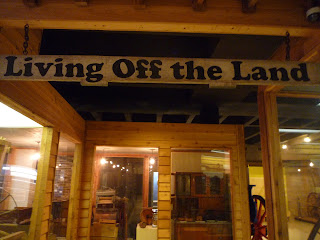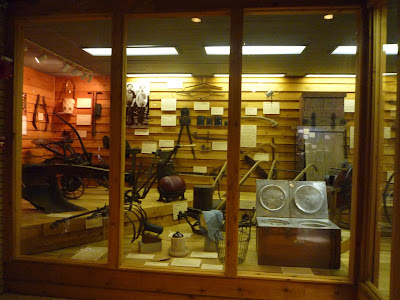This Friday in Dr. Fears' class, we went to ASU Museum. Ms. The Arkansas State University Museum has dozens of exhibits that will appeal to people of all ages and interests, and will provide education and entertainment for families, friends, and solo tours. Ponder, who is the coordinator working at ASU Museum, introduce us the exhibition of agriculture.
Ms. Ponder told us the ASU Museum serves the academic mission of the university as a teaching museum and provides quality programming that broadens the perceptions and aspirations of people in Northeast Arkansas and the Mississippi River Delta region, connects people with their history, promotes tolerance, engages minds in progressive thinking, and enhances the sense of community among all audiences.
 Over 4,000 objects tell the story of Arkansas from the first recorded history of the area to the recent past. Stone tools, burned corn, and effigy pots dating from 1350 to 1650 A.D. as well as recent objects including a doll in winter costume, beadwork, a ball stick, barbed wire, and land grant records cover Quapaw culture. Additional Native American collections focus on Southwest cultures and traditional decorative arts by Native Americans. Artifacts related to the european settlement of Arkansas include agricultural tools, a covered wagon,and household goods. History objects document the coming of the railroads to Northeast Arkansas (which allowed increased settlement and economic opportunity) and later industrial development in the area. The military history collection includes 900 objects from practically every U.S. conflict from the Revolutionary War through Operation Desert Storm, with an emphasis on Arkansans involved.
Over 4,000 objects tell the story of Arkansas from the first recorded history of the area to the recent past. Stone tools, burned corn, and effigy pots dating from 1350 to 1650 A.D. as well as recent objects including a doll in winter costume, beadwork, a ball stick, barbed wire, and land grant records cover Quapaw culture. Additional Native American collections focus on Southwest cultures and traditional decorative arts by Native Americans. Artifacts related to the european settlement of Arkansas include agricultural tools, a covered wagon,and household goods. History objects document the coming of the railroads to Northeast Arkansas (which allowed increased settlement and economic opportunity) and later industrial development in the area. The military history collection includes 900 objects from practically every U.S. conflict from the Revolutionary War through Operation Desert Storm, with an emphasis on Arkansans involved.Farming
Living off the Land
Covered wagons carried settlers west. This wagon moved a family to carroll county to Northwest Arkansas.
The wagon could be a family's home for months. It was important not pack too much. The lighter the weight, the less it would be stuck in mud.
The trip to california could take four to six month, and travelers usually averaged 10 to 15 miles a day.
Such an amazing visit! I leart a lot of knowledge about history and agriculture there. And I am sure I will be back to the museum sometime. If you are interested to visit ASU Museum, here are some links you can find more informtion.
http://www.astate.edu/a/museum/
The video introduction of ASU Museum
http://www.youtube.com/watch?v=KLTUooIe6WA
The history about ASU Museum.













No comments:
Post a Comment